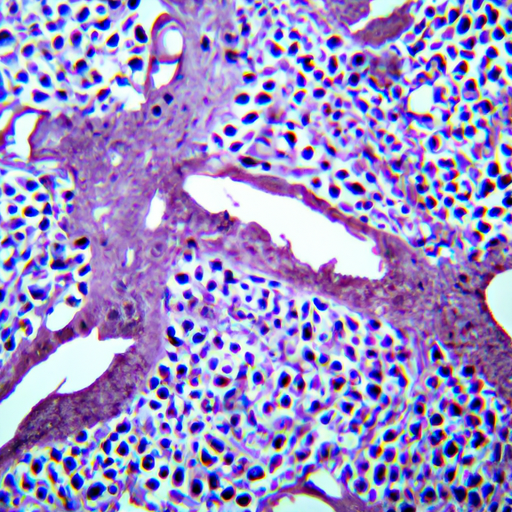Adrenal adenoma, a common noncancerous tumor of the adrenal gland, can have a significant impact on a person’s health and well-being. Understanding the causes, symptoms, and diagnosis of this condition is crucial in order to provide appropriate treatment and support. This article will delve into the intricacies of adrenal adenoma, exploring its various facets such as its causes, symptoms, and diagnostic methods. Additionally, it will discuss the available treatment options, both surgical and non-surgical, and the potential lifestyle changes that can aid in managing the condition. Furthermore, it will shed light on the prognosis and supportive care needed for individuals living with adrenal adenoma. By the end of this article, readers will have gained comprehensive knowledge about adrenal adenoma and the various aspects associated with its diagnosis, treatment, and living with the condition.
1. Understanding Adrenal Adenoma: Causes, Symptoms, and Diagnosis
Adrenal adenoma is a common benign tumor that develops in the adrenal glands, which are located on top of each kidney. These small glands play a crucial role in producing hormones that regulate various bodily functions, including metabolism, blood pressure, and responses to stress.
Causes:
The exact cause of adrenal adenoma remains unclear. However, researchers believe that certain genetic mutations may contribute to the development of these tumors. Additionally, hormonal imbalances and excessive production of adrenal hormones, such as cortisol, aldosterone, or androgens, can also increase the risk of developing adrenal adenoma.
Symptoms:
In most cases, adrenal adenomas do not cause any symptoms and are incidentally discovered during imaging tests for unrelated conditions. However, in some instances, individuals may experience symptoms related to hormonal imbalances caused by the tumor. These symptoms can vary depending on the specific hormone affected. For instance, excess cortisol production can lead to weight gain, high blood pressure, diabetes, and muscle weakness. On the other hand, an adenoma producing excessive aldosterone can result in high blood pressure and low potassium levels, causing muscle cramps and weakness. Adrenal adenomas that produce androgens may cause virilization in women, leading to male-pattern hair growth, deepening of the voice, and irregular menstrual periods.
Diagnosis:
Diagnosing adrenal adenoma typically involves a series of tests and assessments. Initially, a thorough medical history and physical examination are conducted to identify any symptoms or risk factors. Blood tests may also be performed
2. Treatment Options for Adrenal Adenoma: Surgical and Non-surgical Approaches
Adrenal adenoma, a common type of adrenal tumor, is a non-cancerous growth that develops in the adrenal glands. These small glands, located on top of each kidney, play a crucial role in producing hormones that regulate various bodily functions. While most adrenal adenomas are harmless and do not cause any symptoms, some may produce excessive amounts of hormones, leading to various health complications.
Once diagnosed with adrenal adenoma, it is essential to determine the appropriate treatment approach. The treatment options for adrenal adenoma primarily depend on the size and hormonal activity of the tumor, as well as the patient’s overall health. Two main approaches are commonly employed: surgical and non-surgical.
1. Surgical Treatment:
Surgery is often recommended for adrenal adenomas that are large in size (typically greater than 4 centimeters) or produce excessive hormones. The surgical procedure, known as adrenalectomy, involves removing the affected adrenal gland or the tumor itself. There are two main techniques for adrenalectomy:
a) Laparoscopic Adrenalectomy: This minimally invasive procedure involves making several small incisions in the abdomen and inserting a laparoscope (a thin tube with a camera) and surgical instruments. The surgeon views the surgical area on a monitor and skillfully removes the adrenal gland or tumor. Laparoscopic adrenalectomy offers numerous benefits, including shorter hospital stays, reduced pain, and faster recovery times.
b) Open Adrenalectomy: In certain cases, an open adrenalectomy
3. Living with Adrenal Adenoma: Lifestyle Changes, Prognosis, and Supportive Care
Living with Adrenal Adenoma: Lifestyle Changes, Prognosis, and Supportive Care
Being diagnosed with adrenal adenoma can be overwhelming and may require some adjustments to your lifestyle. It is important to understand the condition, its prognosis, and the necessary supportive care to effectively manage this condition and maintain a good quality of life.
Lifestyle Changes:
Adrenal adenoma is a benign tumor that forms in the adrenal gland. While in most cases it does not cause any symptoms or health concerns, it is essential to adopt certain lifestyle changes to minimize the risk of complications. Making the following adjustments can significantly contribute to your overall well-being:
1. Diet: A well-balanced diet plays a vital role in managing adrenal adenoma. Focus on consuming a variety of fruits, vegetables, whole grains, lean proteins, and healthy fats. Limit your intake of processed foods, sugary snacks, and beverages. Additionally, reducing your sodium intake may help control blood pressure, as some adrenal adenomas are hormone-producing and can affect blood pressure regulation.
2. Exercise: Regular physical activity is beneficial for overall health and can help maintain a healthy weight. Engaging in moderate-intensity exercises, such as brisk walking, swimming, or cycling, for at least 150 minutes per week is recommended. However, it is crucial to consult your healthcare provider before starting any exercise regimen, as they can provide guidance based on your individual circumstances.
3. Stress Management: Stress can exacerbate symptoms associated with adrenal adenoma. Incorporating stress management techniques
